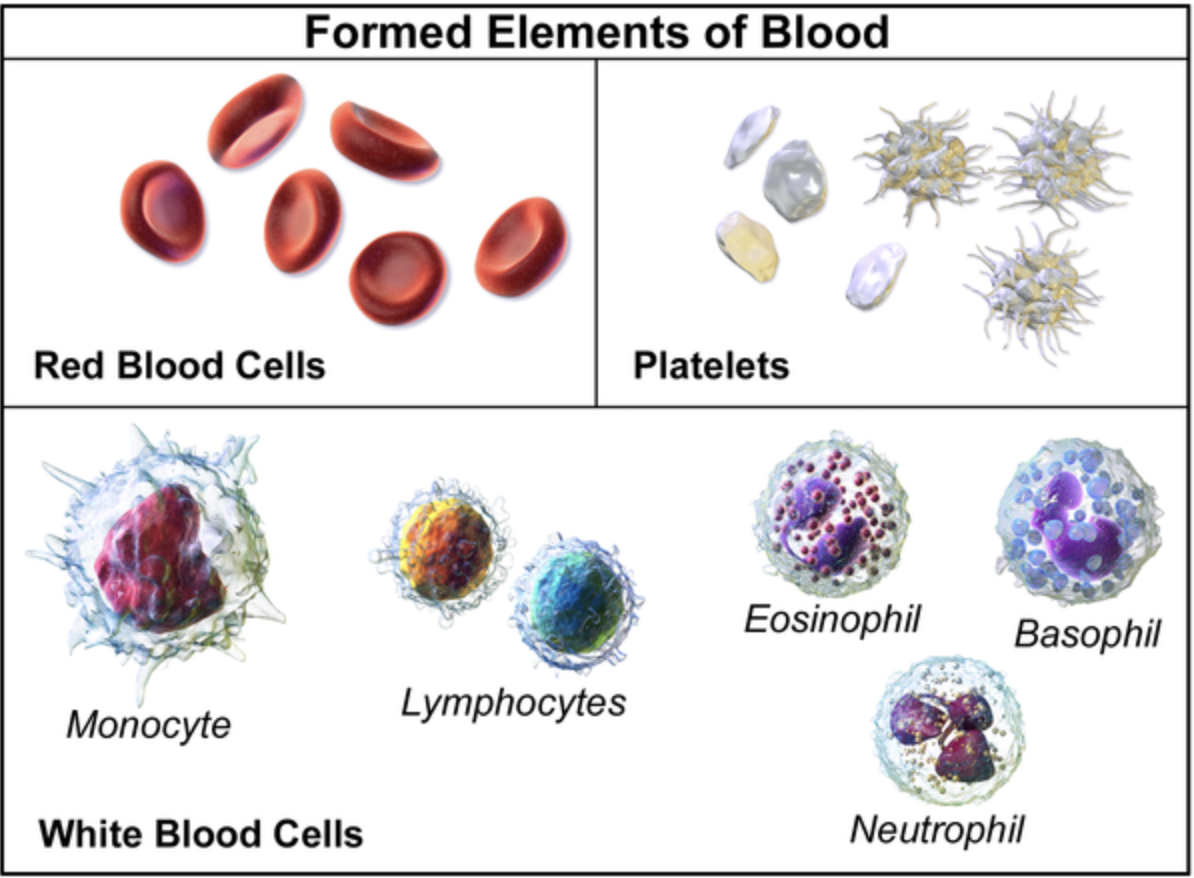
Connective tissue with a fluid matrix is
(a) Ligament
(b) Tendons
(c) Blood
(d) Cartilage
Answer
492k+ views
Hint: Connective tissue is a tissue that connects and supports the other types of tissues in the body. This connective tissue consists of a red-colored pigment called hemoglobin and transport nutrients to the body. Connective tissue proper is divided into loose and dense connective tissues.
Complete answer:
Blood is a type of loose connective tissue. The main constituent of blood is its matrix as plasma, which provides blood the fluid nature and is a complex of a solution containing more than 90 percent water along with other proteins and blood cells. The major plasma protein is serum albumin. The following are the major types of blood cells:
- Red blood cells (erythrocytes)
- Platelets (thrombocytes)
- White blood cells (Leucocytes)
So, the correct answer is, ‘Blood’.
Additional Information:
- Red Blood Cells: These are anucleate, biconcave cells consisting of hemoglobin, that transports oxygen and carbon dioxide in the body via the circulatory system.
- Platelets: These are fragments derived from the megakaryocytes produced in the bone marrow, which help the formation of clots during tissue injury and prevent blood loss.
- White Blood Cells: These are our immune cells that fight against the infections and pathogens trying to make us sick.
- White blood cells are of the following types:
- Monocytes help to engulf and kill the bacteria.

- Lymphocytes produce antibodies to fight against bacteria, viruses, and other potential pathogenic invaders.
- Neutrophils kill and digest bacteria and are the first line of defense during the onset of an infection.
- Basophils secrete chemicals such as histamine, a marker of allergic disease, that help to control the body's immune response.
- Eosinophils attack and kill invading parasites and cancer cells.
Note:
- Lymph contains plasma, carbon dioxide, proteins, glucose, and white blood cells. Red blood cells major nutrients present in the blood are absent in lymph.
- Ligaments are the connective tissues that attach bone to bone. Tendons are the connective tissue that links between a muscle and a bone. These two are dense regular connective tissues. Cartilage is the elastic connective tissue present between the joints to provide support and movement.
Complete answer:
Blood is a type of loose connective tissue. The main constituent of blood is its matrix as plasma, which provides blood the fluid nature and is a complex of a solution containing more than 90 percent water along with other proteins and blood cells. The major plasma protein is serum albumin. The following are the major types of blood cells:
- Red blood cells (erythrocytes)
- Platelets (thrombocytes)
- White blood cells (Leucocytes)
So, the correct answer is, ‘Blood’.
Additional Information:
- Red Blood Cells: These are anucleate, biconcave cells consisting of hemoglobin, that transports oxygen and carbon dioxide in the body via the circulatory system.
- Platelets: These are fragments derived from the megakaryocytes produced in the bone marrow, which help the formation of clots during tissue injury and prevent blood loss.
- White Blood Cells: These are our immune cells that fight against the infections and pathogens trying to make us sick.
- White blood cells are of the following types:
- Monocytes help to engulf and kill the bacteria.

- Lymphocytes produce antibodies to fight against bacteria, viruses, and other potential pathogenic invaders.
- Neutrophils kill and digest bacteria and are the first line of defense during the onset of an infection.
- Basophils secrete chemicals such as histamine, a marker of allergic disease, that help to control the body's immune response.
- Eosinophils attack and kill invading parasites and cancer cells.
Note:
- Lymph contains plasma, carbon dioxide, proteins, glucose, and white blood cells. Red blood cells major nutrients present in the blood are absent in lymph.
- Ligaments are the connective tissues that attach bone to bone. Tendons are the connective tissue that links between a muscle and a bone. These two are dense regular connective tissues. Cartilage is the elastic connective tissue present between the joints to provide support and movement.
Latest Vedantu courses for you
Grade 11 Science PCM | CBSE | SCHOOL | English
CBSE (2025-26)
School Full course for CBSE students
₹41,848 per year
EMI starts from ₹3,487.34 per month
Recently Updated Pages
Master Class 11 Economics: Engaging Questions & Answers for Success

Master Class 11 Business Studies: Engaging Questions & Answers for Success

Master Class 11 Accountancy: Engaging Questions & Answers for Success

Master Class 11 English: Engaging Questions & Answers for Success

Master Class 11 Computer Science: Engaging Questions & Answers for Success

Master Class 11 Maths: Engaging Questions & Answers for Success

Trending doubts
1 ton equals to A 100 kg B 1000 kg C 10 kg D 10000 class 11 physics CBSE

1 Quintal is equal to a 110 kg b 10 kg c 100kg d 1000 class 11 physics CBSE

How much is 23 kg in pounds class 11 chemistry CBSE

Difference between physical and chemical change class 11 chemistry CBSE

Number of oneone functions from A to B where nA 4 and class 11 maths CBSE

What is the z value for a 90 95 and 99 percent confidence class 11 maths CBSE




